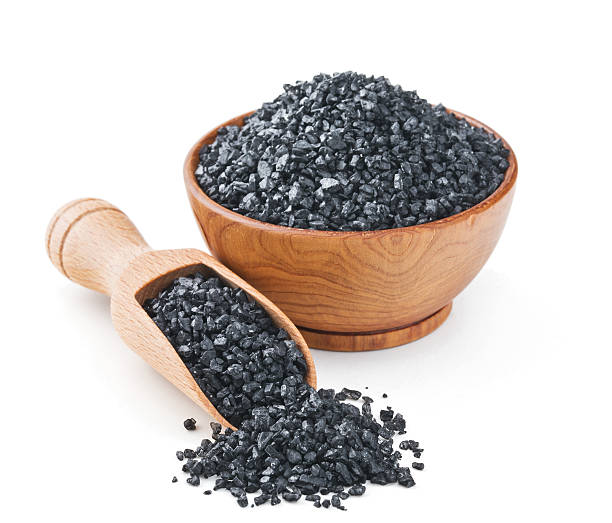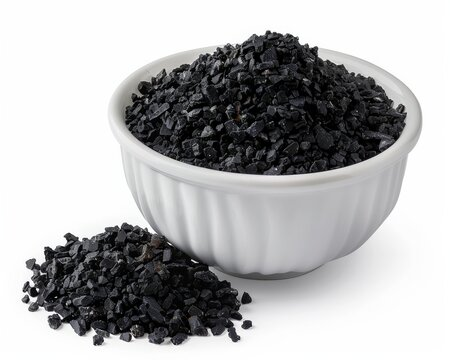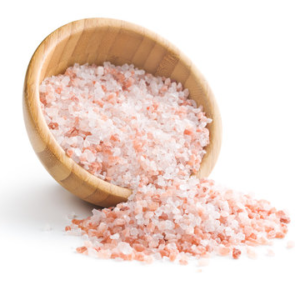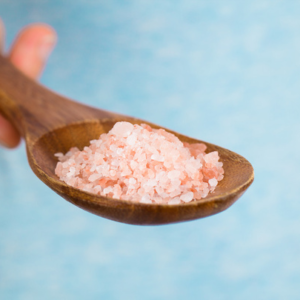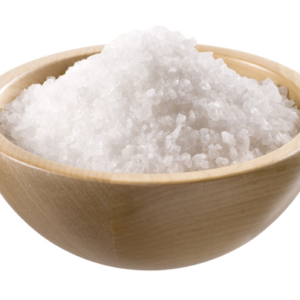Description
Key Characteristics:
- Color: Despite its name, black salt can range in color from dark brown to black, with a reddish-brown tint sometimes visible. The color comes from the presence of iron, magnesium, and other trace minerals.
- Flavor: Black salt has a strong, pungent, and somewhat sulfuric taste, which is often compared to the flavor of boiled eggs or the mineral scent of a salty spring. This unique flavor is the result of the natural mineral content in the salt, particularly sulfur compounds.
- Texture: It is typically available in a crystalline form, which can vary from coarse chunks to fine grains. The coarse crystals are often ground into a fine powder before use.
Composition and Nutrients:
Black salt contains several trace minerals that contribute to its color and flavor, including:
- Sodium Chloride: Like regular table salt, black salt is primarily composed of sodium chloride.
- Iron: This gives the salt its reddish-black color and is essential for blood production and overall health.
- Magnesium: Supports various functions in the body, including muscle and nerve function.
- Potassium: Helps maintain electrolyte balance and normal heart function.
- Sulfur Compounds: These give black salt its distinctive “eggy” or mineral-like taste.
While it is not as rich in minerals as Himalayan salt, the presence of sulfur and iron makes black salt distinct and is often the reason people choose it for specific culinary applications or health-related uses.
Common Uses:
- Culinary: Black salt is a key ingredient in Indian and Pakistani cuisine, where it is used to season a variety of dishes, including:
- Chaat: A popular Indian street food that often features a mix of crunchy, spicy, and tangy ingredients. Black salt is added for its unique flavor.
- Raita: A yogurt-based side dish, commonly served with spicy dishes like biryani. Black salt adds a pungent tang.
- Curries and Dals: It is sometimes added to curries or lentil dishes for its distinct flavor.
- Fruit Salads and Vegetables: It is sprinkled on fresh fruit or salads for a sharp, savory contrast to sweetness.
- Beverages: Black salt can be added to drinks like “buttermilk” or “jaljeera” (an Indian spiced lemonade) for an extra layer of flavor.
- Vegan and Vegetarian Dishes: Due to its sulfuric taste, black salt is often used in vegan or vegetarian dishes as a substitute for eggs or to add depth to plant-based cooking, especially for dishes that traditionally rely on eggs.
Health Benefits (Claimed but with Mixed Evidence):
- Digestive Health: Black salt is believed to aid digestion, and in traditional Ayurvedic practices, it is sometimes recommended for people with indigestion or bloating. It is said to stimulate the production of bile and improve metabolism.
- Detoxification: Some proponents claim that black salt helps to remove toxins from the body, although there is limited scientific evidence to support these claims.
- Electrolyte Balance: The trace minerals in black salt, such as potassium and magnesium, may contribute to maintaining electrolyte balance in the body, especially when consumed in moderation.
- Relieves Muscle Cramps: Due to its mineral content, black salt is sometimes recommended to relieve muscle cramps and support overall muscle health.
- Skin Health: Traditionally, black salt has been used in skin care, either in baths or as a scrub, due to its mineral content. Some people believe it can help exfoliate and rejuvenate the skin, though these claims are largely anecdotal.
Differences from Regular Salt:
- Mineral Content: Black salt contains additional minerals, particularly sulfur, iron, and magnesium, which give it its distinct flavor and color. Regular table salt, on the other hand, is highly refined and typically lacks these trace minerals.
- Flavor Profile: Black salt has a more pungent, sulfuric flavor compared to the clean, sharp taste of regular table salt. This makes it an interesting ingredient in specific culinary traditions.
- Processing: While black salt is often minimally processed, it is typically heated in a furnace (sometimes with additional spices or herbs), which gives it its distinctive flavor profile. Regular table salt is heavily processed, often with additives like anti-caking agents.
How to Use Black Salt:
- As a Finishing Salt: Due to its strong flavor, black salt is best used as a finishing salt, sprinkled on dishes just before serving. It works especially well on cold dishes, salads, and fresh fruit.
- In Cooking: Add it in small amounts to curries, lentil soups, and stews. It can also be mixed into sauces or dressings.
- In Beverages: For a refreshing twist, black salt can be added to drinks like lemonade, fruit juices, or buttermilk.
- In Vegan Dishes: Black salt is often used to mimic the flavor of eggs in vegan cooking, such as tofu scrambles or vegan omelets.
Environmental Considerations:
Black salt, particularly Kala Namak from South Asia, is often hand-harvested from natural salt mines, which is considered a more traditional and sustainable method compared to industrial salt production. However, as with any natural resource, it is important to ensure that the harvesting process is done responsibly to avoid over-mining and environmental degradation.
Conclusion:
Black salt (Kala Namak) is a versatile and flavorful salt used primarily in South Asian cuisine but gaining popularity worldwide for its distinctive taste and purported health benefits. Its sulfuric, egg-like flavor makes it a unique addition to many dishes, particularly in vegetarian and vegan cooking. While the health benefits are often anecdotal and based on traditional uses, black salt remains a popular choice for adding depth to culinary creations and offering a more “natural” alternative to heavily processed salts.


